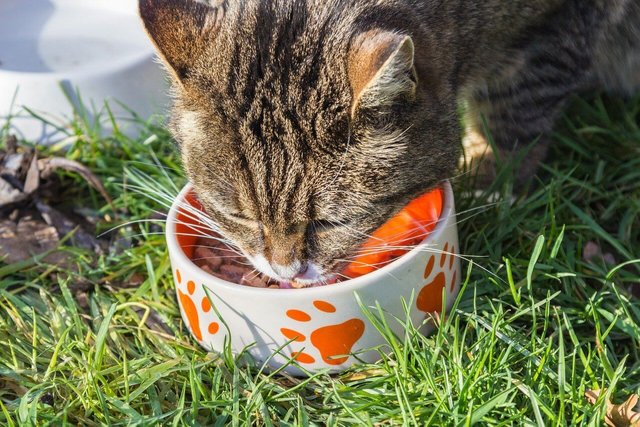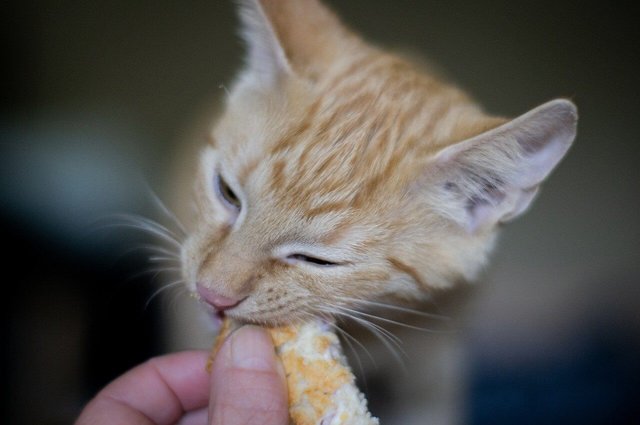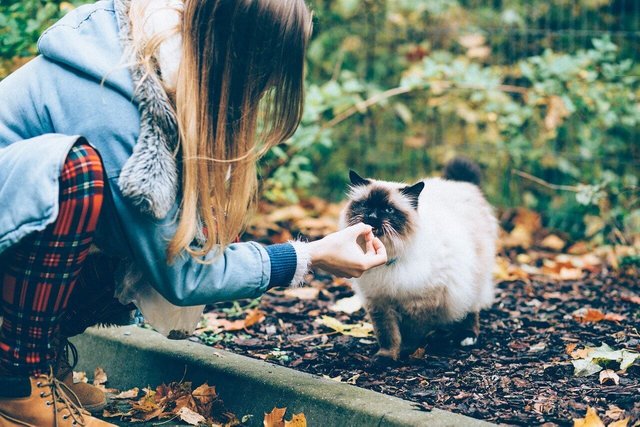What Should I Do If My Cat is Picky With Food?
What Should I Do If My Cat is Picky With Food?

Feeding our pets is a top priority, there are many choices and weight management is an important aspect of healthy pet living. You might be a cat or dog owner (or even both), similar attention to dietary needs are required for all our paw friends. Some may say that cats can be particularly fussy about their meals when compared to their canine chums. Cats are already stubborn drinkers and picky food habits make the challenge of feeding your kitty even harder.
Cats are very particular about their meals. They won’t touch stale food, servings must be fresh and don’t even think about serving things at the wrong temperature. We must say, cats can act as gourmets of the highest pedigree if allowed to do so. What may seem tasty and satisfactory today, might need to go out the window in the near future if they begin to dislike their food. Rotating food brands and making sure your cat gets the best nutrition while satisfying their taste buds is a scratchy situation. It’s tough living with a picky cat. Digging a little deeper into the food bowl, let’s take a closer look at the issue of picky cat food eaters.
Why is My Cat So Picky?
Cats can be picky about eating for many reasons. Inherited pickiness is not far from reason and this doesn’t just relate to taste buds. Disorders or physiological issues in young cats can cause loss of appetite. In some cases, such cats may accept certain type of foods for various reasons, be it smell, texture or other properties. It’s paramount as cat parents that we identify eating issues within our cats and make a clear distinction between disorders and personal preference. Cats who refuse to eat due to underlying health issues are to be taken for immediate medical attention for investigation and treatment.
Building eating habits early is essential. Snacking is a double edged paw sometimes. It can be used to reward your cat and elevate its mood but it can also introduce a source of bias preference and fuel their desire to entitlement to foods that taste ‘better’. Children tend to show a similar attitude, often picking candy other a nutritious dinner. A step further sees some owners allowing cats a taste of their own meals. Sharing part of your meal with your lip licking feline friend might seem like an act of kindness but it’s also a gateway to picky habits.
Cats snacks are tasty treats that are given non occasion. We tend to offer these snacks as one-off treats as they are seen as exceptionally delicious by cats. Though they may be produced for pets, the powerful flavors in cat snacks eclipses those found in regular whole cat meals. Cats snacks may contain natural flavors and pose no direct detriment to health, they can however, deter your cat from eating its regular meals as they demand the candy equivalent of cat foods.
Introducing routine feeding habits is important when following a healthy feeding program. Strategically picking when to serve your cats food is important and should be done proactively rather than passively. Leaving food out and waiting for your cat to turn up for a meal risks contamination and general loss of freshness that would otherwise be an immediate attraction for your cat to eat. Food that is left out will begin to spoil and smell rancid, there is little chance that your cat will want to indulge and their general approach to daily meals will lose interest and enthusiasm. It’s best to rotate between food sources and actively serving fresh meals on a daily basis.

How to Deal With Picky Cats and Food
If Your Cat is a Kitten
Picky eating is a developed habit, kittens are born without bias towards their meals. If no health issues are present, the first year of eating will establish precedence for meals to come in the future. Young kittens tend to chow down on most meals they are served but problems can occur after a few months, it’s important to start introducing new foods and variety at an early age to prevent addiction and pickiness.
Many commercial cat food contain various additives that get your cat eating, perhaps in greater volumes. It’s important to avoid such foods that taste great but offer little in the way of nutrition, moving towards healthier sources of nutrition becomes harder the longer you feed your cat subpar foods filled with additives. Cat snacks may also contain addictive and unhealthy additives, it’s best to avoid serving them to your cat for as long as possible.
It’s important to observe and communicate healthy habits to your cat. If they refuse to eat their whole and healthy meals, trying to encourage them to eat using snacks is a counterproductive method to feeding. It shows that they will be able to receive such snacks so long as they protest and refuse to eat their regular meals. Staying firm and ensuring cats finish their regular meals is important and snacks should remain out of the equation until healthy and desirable eating habits are established. Introducing a feeding window is also an effective method, a sense of designated eating periods will be seen and your cat may begin to value their meals more.

If Your Cat is an Adult
If your cat is already a big adult kitty, habits will be harder to unwind. Ensure that you’ve taken the necessary steps to assess that they are not sick. Health issues should be ruled out before trying to adjust feeding approaches. If your vet discerns that everything is fine, they’re simply picky about their food, it’s time to take action. Adult cats require consistency and dedication as owners should try to correct their unhealthy choices. It’s a long journey ahead but with some patience and perseverance, your cat will come to enjoy varied and healthy foods once more.

Gradual changes to new food sources is a way to slowly taper onto new foods. Mixing their preferred foods with new choices will help to mask and introduce new flavors to your cat. If they finish up their meal, it’s time to up the ratio of new food present in their servings. Canned foods are especially easy to work with when adopting this approach as they can be easily combined into pastes.
Strategically choosing when to feed your cat is also important. Serving new foods when they are hungry will leverage their urgency to eat and can successfully help them to try new foods where they would otherwise refuse. It’s all about timing, we recommend spreading out your meals and watching for when they actively approach their food bowls or ask you food. Cats will sometimes vocalize when they are hungry.
Serving temperature is an important of food serving. Cats will not appreciate foods that are too cold or hot. Leaving food out for a short time when coming out of the refrigerator is recommended before serving. Not all cats are the same however, some cats may like colder servings straight from the fridge and other may prefer things on the warmer side. It’s important to experiment and discover what your cat likes best and use this information to your advantage.
If all else fails, a little compromise might be needed. If your cat refuses the foods you have researched over and picked for them, you might need to work with the next best thing. A food choice that isn’t as healthy but still acceptable to your cat can start the ball rolling. Supplementing their meals in other way through organic additions is a great way to package nutrition into their standard meals.
We hope your cats will lick their bowls clean and stay healthy. Meow! 😻
Images used in this blog post are taken from sources with no attribution required
Visit - https://aipaws.com

 Steem
Steem  Twitter
Twitter  YouTube
YouTube
 Instagram
Instagram Pinterest
Pinterest Facebook
Facebook
I had a similar story. My cat ate very little, I gave her dry food and wet food - but she hardly ate it. Then I tried to feed her natural food, meat, sausages or fish - she didn't eat at all. She was also very thin at two and a half years old - weighing almost 9 pounds if not less... Eventually the vet diagnosed kidney disease - that was the cause. So it doesn't always depend on a picky nature! Now she eats regular fodder and sometimes I give her meat and catnip. Btw, not all plants are healthy - see here. Now I'm keeping a closer eye on what plants she tries to eat while I walk her.